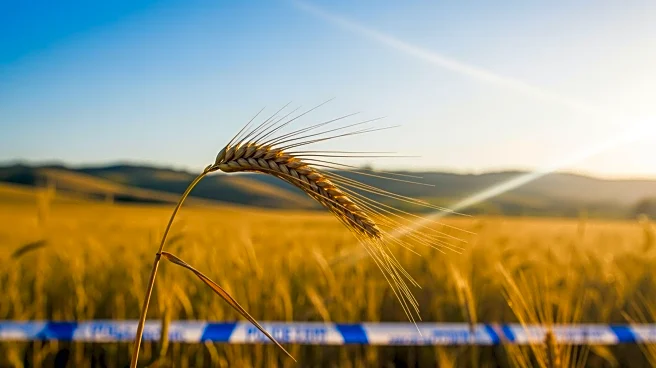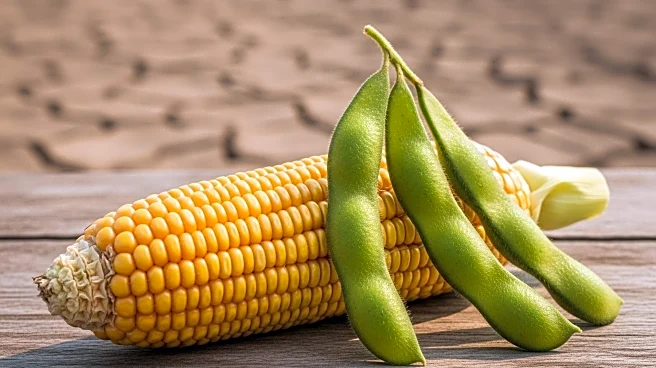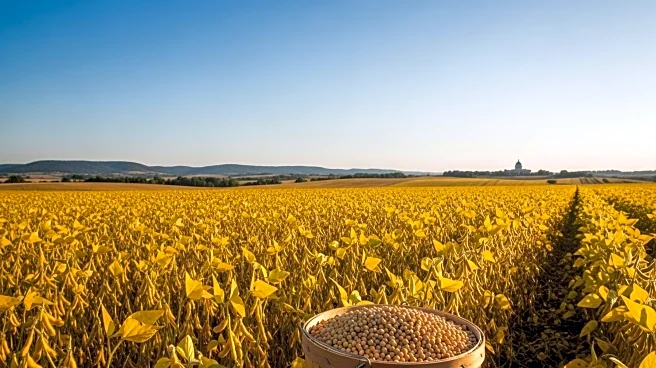What's Happening?
Wheat futures have declined in overnight trading due to strong global production forecasts and favorable weather conditions in the U.S. southern Plains. The U.S. Department of Agriculture projected global wheat
output at 816.2 million metric tons for the 2025/2026 marketing year, an increase from the previous season. Russian wheat production is also expected to rise, contributing to the downward pressure on prices. In the U.S., favorable weather is aiding winter wheat planting, with 66% of the crop already in the ground. Meanwhile, corn and soybean harvests are progressing in Iowa, despite challenges from fungal diseases and recent rains.
Why It's Important?
The decline in wheat futures reflects broader trends in global agriculture, where increased production can lead to lower prices, affecting farmers' profitability. The favorable weather in the U.S. southern Plains supports efficient planting, potentially leading to a robust harvest. However, the ongoing government shutdown has delayed official crop progress reports, creating uncertainty in the market. The situation in Iowa highlights the impact of weather and disease on crop yields, influencing local agricultural economies and potentially affecting national supply levels.
What's Next?
As wheat planting continues, market participants will closely monitor weather patterns and production forecasts to anticipate future price movements. The resolution of the government shutdown could provide more accurate data, helping farmers and traders make informed decisions. In Iowa, farmers may need to adapt their strategies to mitigate disease impacts, possibly increasing the use of fungicides. The agricultural sector may also see shifts in planting decisions based on market conditions and weather forecasts.
Beyond the Headlines
The fluctuations in wheat futures and crop conditions in Iowa underscore the interconnectedness of global agriculture markets and local farming practices. The reliance on accurate data for decision-making highlights the importance of government reports and the potential disruptions caused by political events like shutdowns. The situation may prompt discussions on improving agricultural resilience and adapting to changing environmental conditions.











